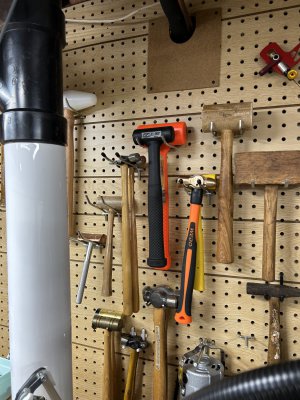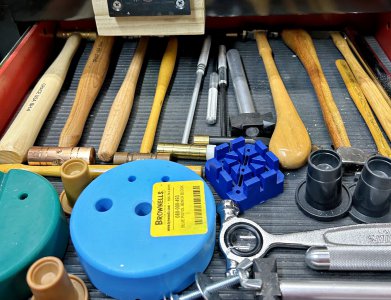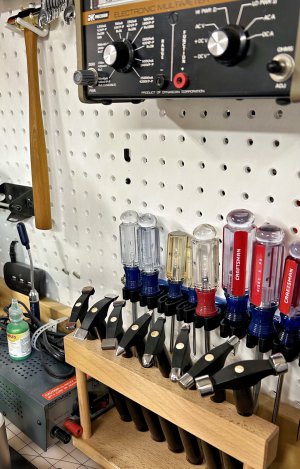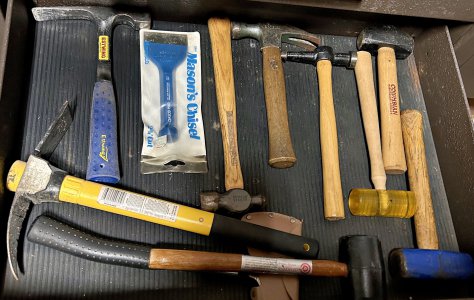I am curious as to why it is an anathema to have a claw hammer in a machine shop. It sounds like hammer snobbery. You don't have to use the claw and the flat face is just as effective at striking a surface as a ball peen, or any other steel faced hammer.
I have dozens of hammers of all types and sizes. Ball peens, cross peens, straight peens engineer's, rounding hammers, along with claw hammers in my hammer collection. When I am punching out a pin, I will grab the closest hammer at hand that is the right size.





